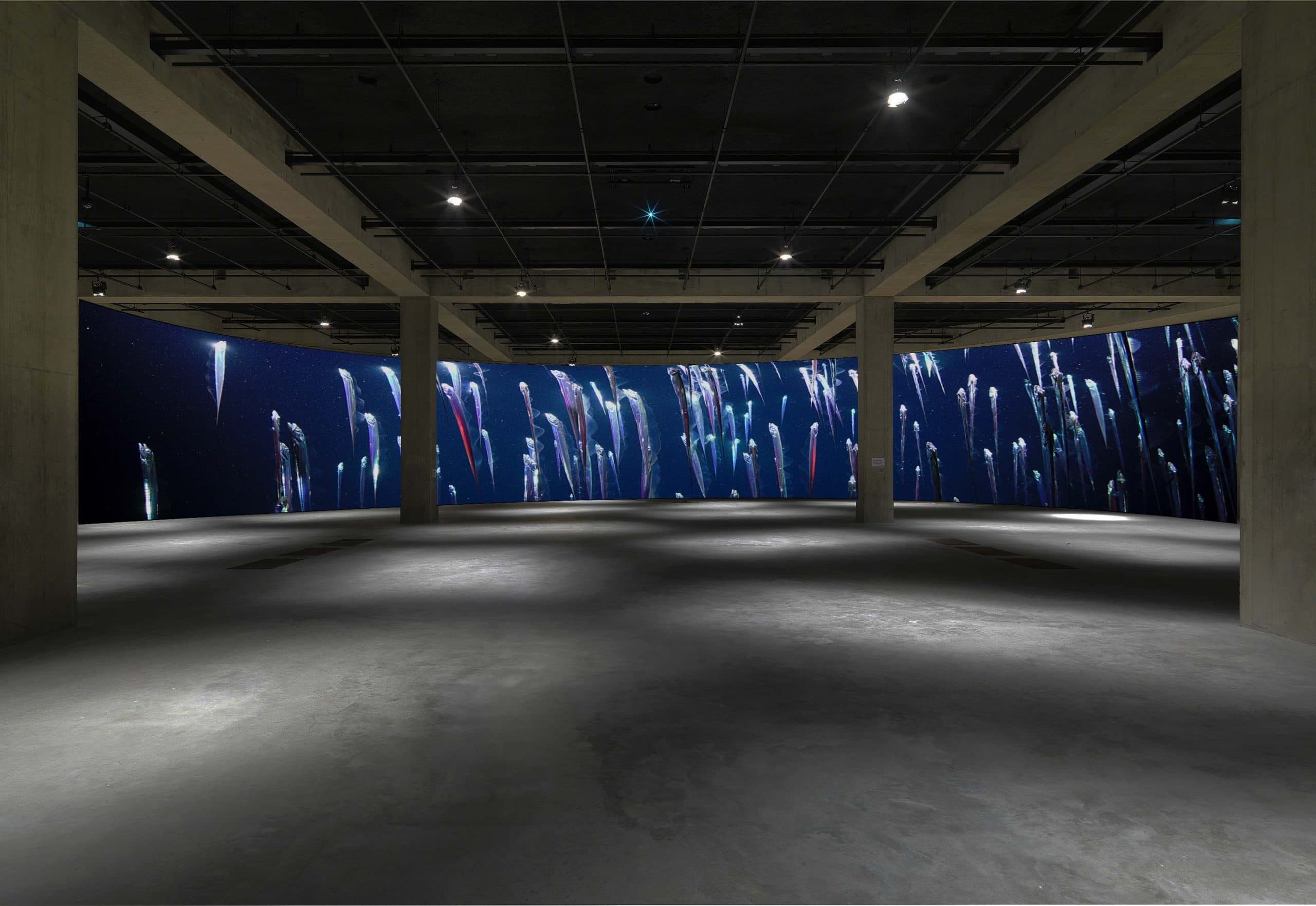
- - MASP EXHIBITION - VIDEO ROOM: EMILIJA ŠKARNULYTĖ (BR), 10.10.2025 - 11.23.2025
- - THE NEW ORCHESTRA. GROUP SHOW AT MUSEO DELLA MONTAGNA (IT), 30.10.2025 - 31.05.2026
- - BALTIC | ESCAPING WITH ČIURLIONIS SYMPOSIUM AT YALE MACMILLAN CENTER (US), 30-31.10.2025
- - SOLO SHOW: EMILIJA ŠKARNULYTĖ - KUNSTHAUS GRAZ (AT), 08.11.2025 - 15.02.2026
- - MARINE ECOLOGIES EXHIBITION AT BALTIC (UK), 8.11.2025 - 03.05.2026
- - MUNCH TRIENNIAL ‘ALMOST UNREAL’ (NO), 15.11.2025 - 22.02.2026
- - SOLO SHOW AT TATE ST IVES (UK), 06.12.2025 - 12.04.2026
- - IMMERSIVE SINGLE-CHANEL PIECE BY EMILIJA ŠKARNULYTĖ (CH), 22.08.2026 - 08.11.2026

- Riparia
- Hypoxia
- Penumbra, Fondazione in Between Art Film, 2022
- Chambers of Radiance, Radvila Palace Museum of Art, 2022
- Eternal Return, Tate Modern, 2021
- t 1/2, Den Frie Centre of Contemporary Art, 2021
- Sunken Cities, Kunsthaus Pasquart, 2021
- Circular Time. For Aleksandra Kasuba, National Gallery of Art, 2021
- Chambers of Radiance, The PinchukArtCentre, 2020
- Screen City Biennial, 2019

Emilija Škarnulytė is a Lithuanian-born artist and filmmaker. Working between the realms of the documentary and the imaginary, Škarnulytė makes films and immersive installations exploring deep time and invisible structures. She works in realms that range from the cosmic and geological to the ecological and political.
She most recently presented works at MoMA PS1, Palais de Tokyo, Louisiana MoMA, Villa Medici, MORI Art Museum, Kiasma, Gwangju Biennale, Helsinki Biennale, Penumbra. Her work was presented in solo exhibitions at Kunsthall Trondheim (2024), Canal Projects, NYC (2024), Kunsthaus Göttingen (2024) Ferme-Asile, Sion (2023); Kunsthaus Pasquart, Biel/Bienne (2021); Den Frie, Copenhagen (2021); National Gallery of Vilnius (2021); Künstlerhaus Bethanien, Berlin (2017); Contemporary Art Centre CAC of Vilnius (2015). An upcoming show at Tate St Ives will open in October 2025.
Prizes awarded to her include the 2023 Ars Fennica Award and the 2019 Future Generation Art Prize. She represented Lithuania at the XXII Triennale di Milano and participated in the Baltic Pavilion at the 2018 Venice Architecture Biennale. She has films in the collections of the Centre Pompidou, Kadist Foundation, Kiasma, Fondazione in between Art and Film, IFA, HAM, FRAC Corsica, LNMA, MO Museum, and private collections. Her works have been screened at the Tate Modern and Serpentine Gallery in London, Centre Pompidou in Paris, Museum of Modern Art in New York, and numerous film festivals, including Oberhausen, Visions du Réel, Rotterdam, Busan, among many others.
She is a founder and currently co-directs Polar Film Lab, a collective for analogue film practice located in Tromsø, Norway and is a member of the artist duo New Mineral Collective.



Tate Modern, London, United Kingdom
2021 10 29 – 10 31
Emilija Škarnulytė conceived the installation for Tate Modern’s South Tank to mark COP26 (the 26th United Nations Climate Change conference, taking place this year in Glasgow). Set 10,000 years in the future, looking into the past (our present), the artist dives into deep time, from the cosmic and geological, to the ecological and political.
The artist based the work on mapping technologies, such as sonar, remote sensing and seafloor scanning, and set out to explore structures in the depths of the sea. These include Baia, an ancient Roman city now under water due to seismic activity in the Mediterranean and the Gulf of Mexico, where laboratory-bred corals are used to restore the ecosystems damaged in consecutive oil spills, among other sites.
Dressed as a mermaid, the artist freedives in an attempt to measure space and time, using her own body as a scale. Reflecting upon Škarnulytė’s work, the poet Quinn Latimer encourages us to ‘hold our breath. Drop. Dive. Open our eyes. Leave our body at the surface. We are now all eye, like a drill; all tail, like a fish.’
Curators Valentine Umansky and Katy Wan
Organised by Hyundai Tate Research Centre: Transnational in partnership with Hyundai Motor.


